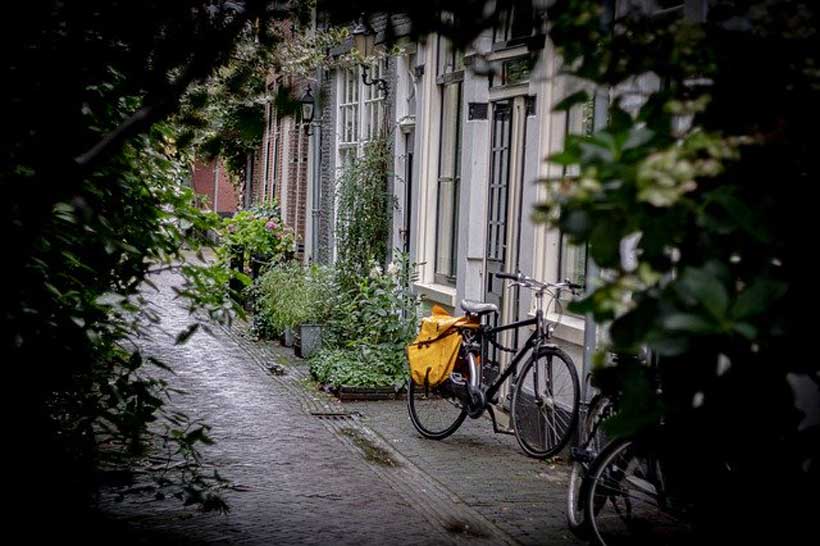Global stock markets such as Footsie, Dow Jones Industrial Average and Nikkei has decreased the profit since the outbreak of Covid-19 Pandemic in early 2020. Dow Jones fell to its lowest point, minus 35%, in April 2020 (Bloomberg, 4/27/2020). In US, more than 1 in 4 workers have lost their jobs since the coronavirus crisis shut down much of the economy in March.(National Public Radio, 28/3/2020).
Even the trend of Covid-19 death case has decrease, but still worried. Will the second wave happen? Because of that a new normal order is needed, when the spread of the pandemic stops and then the economy returns to normal.
There are at least two potential scenarios for the recovery of the economic crisis which were affected by Covid-19. The first scenario, gross domestic product will be pushed in such a way as to make the economy grow faster. By stimulating consumption, investment, government spending, and commodity exports. At the same time, industrialization will grow stronger than the pre-Covid-19 conditions.
Environmental conditions that had improved during the emergence of Covid-19 might be polluted again. Carbon emissions are predicted to rise into the air, to pre-Covid-19 levels, and will even be higher than before. This is what is called the “revenge pollution” phenomenon. Like the recession and the global financial crisis in 2008, which is comparable to the scale of the crisis impact of the Pandemic Covid-19, even in very different kinds. Governments in the world responded with an economic rescue package and a stimulus worth by billions of USD. But in the last decade, greenhouse gas emissions have increased.
China has a real precedent. In response to the global financial crisis in 2008, the Chinese government launched a USD 586 billion stimulus package focused on massive infrastructure projects. That is why China’s industry has grown rapidly over the years. But for the environmental impact, their emission levels increased. Known as “airpocalypse” as the worst smog in city centers, such as Beijing in the winter of 2012 and 2013.
Besides, the world also creates a level of inequality that is far greater than that seen since the Second World War. The world shows a very striking difference between the super-rich and the very poor in terms of health, job security, education and other matters. As stated by Oxfam (2017), the wealth of 1% of the rich is equal to the combined wealth of 99% of the world’s population.
Then the second scenario, where we depart from the revenge pollution precedent after 2008. Pandemics give opportunities, when the economy back to begin normally and new rules, there is an opportunity to make the impossible to possible – or the last ignored things can be applied. This is the best time for the green agenda includes in the order that we want to renew.
Oxford University recently published an interesting study related to the global crisis recovery plan, entitled “Building back better: Green COVID-19 recovery packages will boost economic growth and stop climate change.” The focus of the research is to compare between green stimulus projects with traditional stimulus, such as the taken steps after the 2008 global financial crisis. The researchers found that, green projects create more work, provide higher short-term returns, and lead to long-term increased cost savings.
In economic development, to quickly recover from the crisis, the Government needs projects, which is called by experts with the term ‘shovel ready’ infrastructure projects. It exceeds labor-intensive projects, it also does not need high-level skills or extensive training, and gives profitable infrastructure for the economy. An example is the clean energy infrastructure, which produces twice as much work as a fossil fuel project.
We can see the need for bicycle-friendly and pedestrian-friendly infrastructure in cities. Then build a broadband internet network connection, because online systems for schools and work will be used massively. And the network for charging electric vehicles. Therefore, in the future we will definitely need more electricity. It also needs mass projects for solar, wind and biogas power plants.
According to WRI (2017), the main sources of global greenhouse gas emissions are electricity (31%), agriculture (11%), transportation (15%), forestry (6%) and manufacturing (12%). All types of energy production contribute 72% of all emissions. The energy sector is the most dominant factor causing greenhouse gas emissions. That’s how our lives are still dependent on fossil energy in the “old normal”. “New normal” should be able to replace old energy sources with renewable energy.
In April 2020, EU Ministers of environment launched “The European Green Deal” as the point of the post Covid-19 recovery process. At least 100 billion Euros were mobilized during the 2021-2027 period in the most affected regions for investment in environmentally friendly technology, decarbonate energy sector, and other new green norms.
CEOs of large companies such as Ikea, H&M and Danone have signed commitments representing the private sector in this alliance. The Contracting Parties understand that the fight against climate change is the point of Europe’s new economic policy, with an emphasis on renewable energy, zero emissions and new technology. This should be an example for the world in crisis recovery from the impact of the Corona virus pandemic. There is an opportunity to redesign a sustainable and inclusive economy.
In the Paris Agreement 2015, countries in the world have agreed to responsible for reducing the impact of climate change, with different portions and capabilities.The target is quite high, the world must reduce emissions by more than 45% if global warming is limited to 1.5 °C. Without the great new adaptation, the goals won’t be achieved easily.


